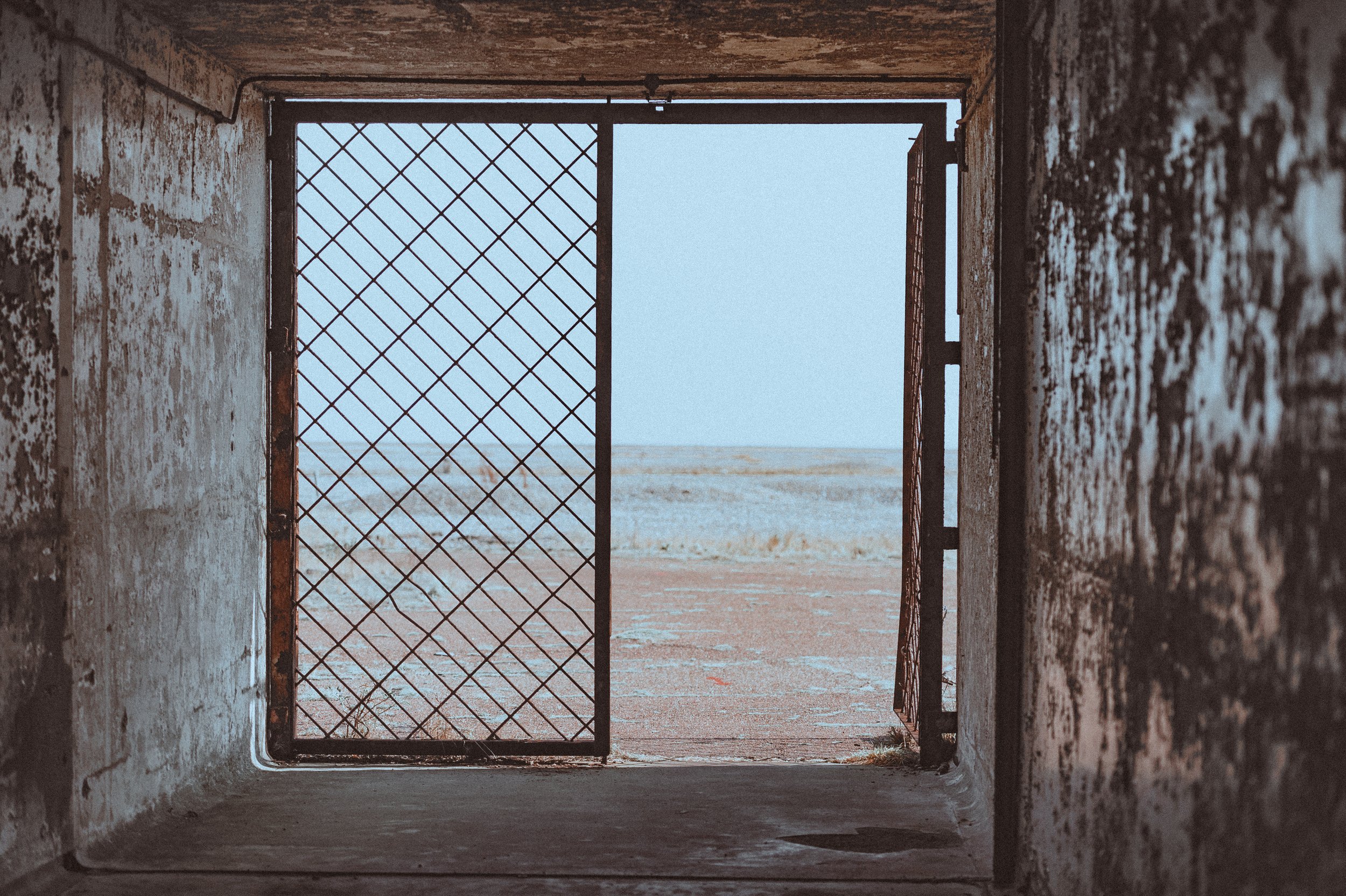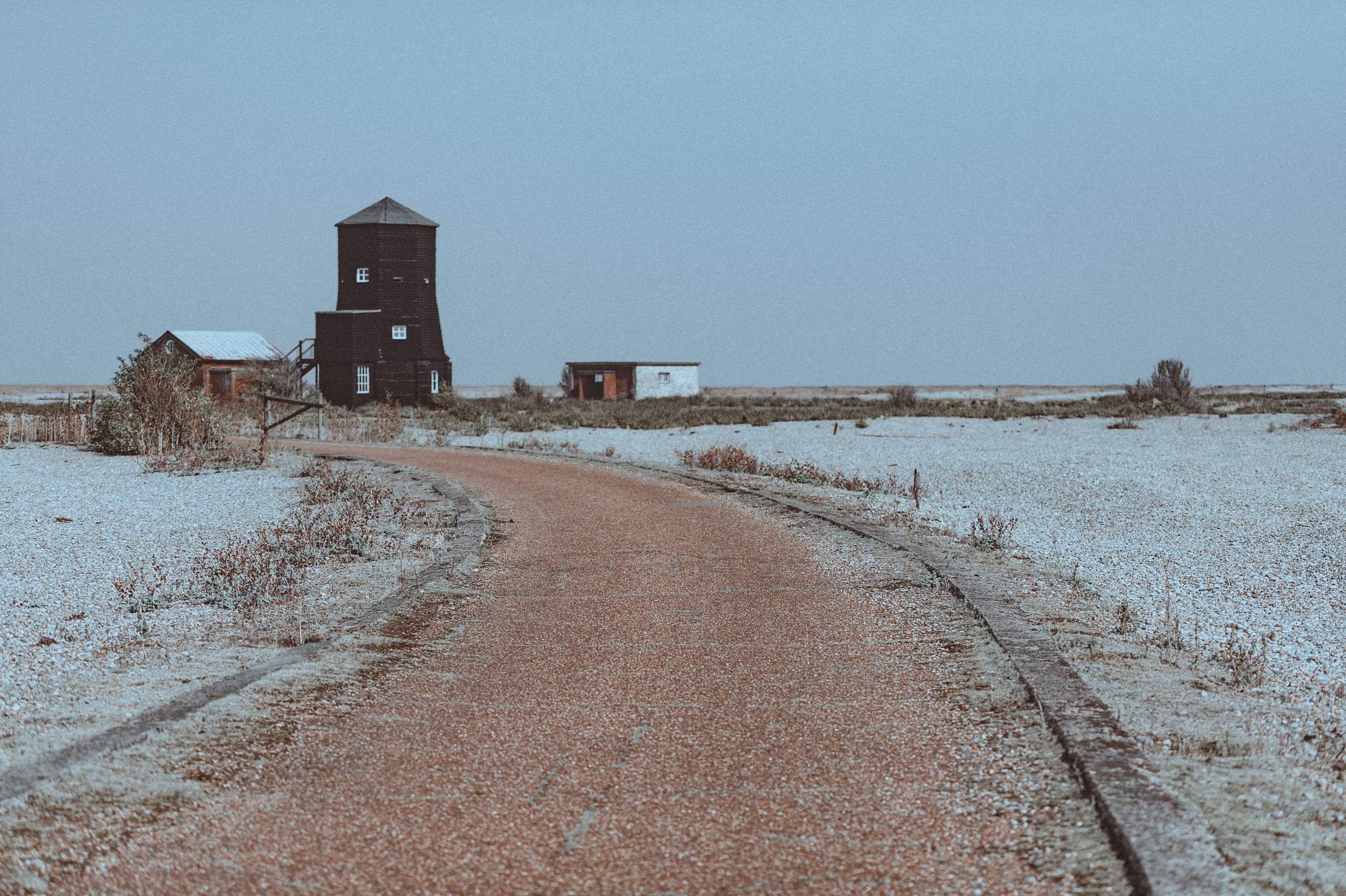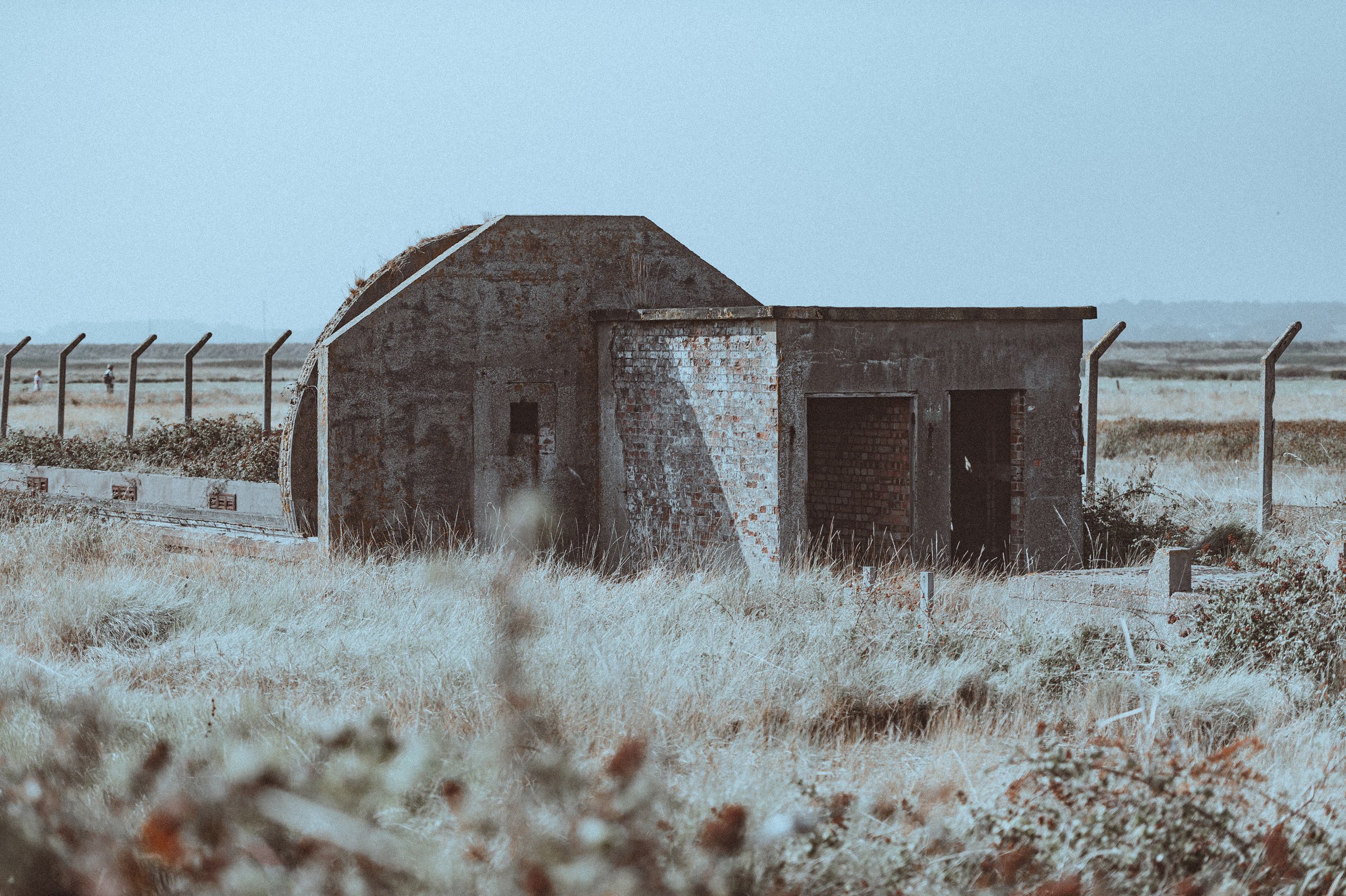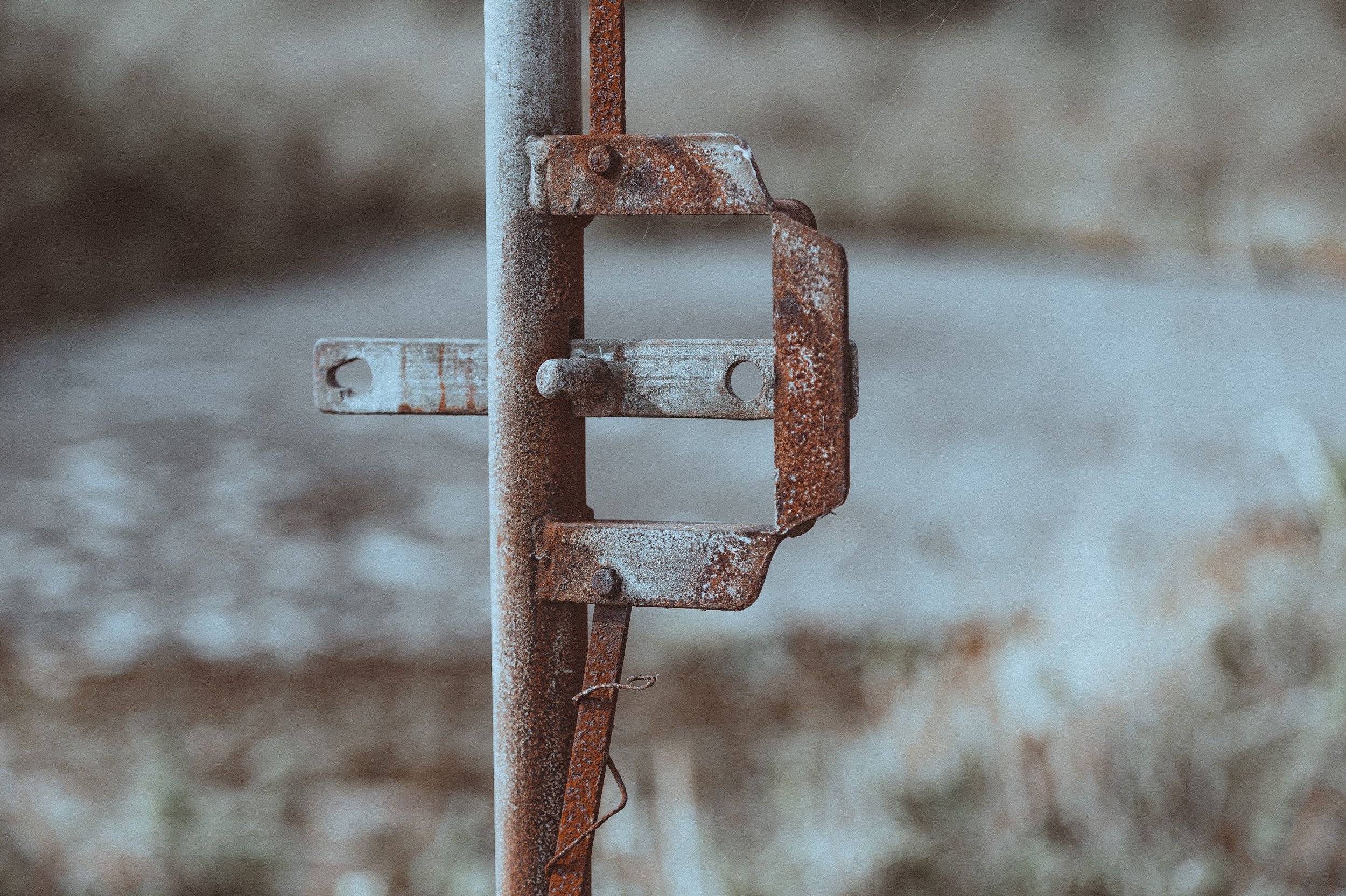Orford Ness: Military Secrets at a Former Cold War Base
From the inside looking out, the entrance to one of the former Atomic Weapons Establishment buildings on the site.
Orford Ness is a former Ministry of Defence and Atomic Weapons Research Establishment (AWRE) site used throughout the mid-Twentieth Century and Cold War. Decommissioned in the 1980s, the site is now an important biotope and Europe’s largest vegetated shingle spit. Formed by longshore drift, Orford Ness is located on the North Sea coast in the estuary of the River Ore and linked to the mainland at Aldeburgh, but accessible by boat from Orford.
In 1913 the War Department purchased Orford Ness and used the site as a weapons testing range. Throughout its life as a secret weapons testing range and research establishment people’s access to the site was strictly controlled and many secret experiments and weapons tests were conducted during both World Wars and into the Cold War. The secret nature of the work at the site gave rise several conspiracy theory, including that the Germans attempted a landing their in 1940, but were repelled. Most of the weapons testing conducted throughout the site’s early history and in the inter-war years was for aerial warfare, ballistics and rocketry. Radar, which gave Britain an important edge in the Battle of Britain was also developed at the site by Robert Watson-Watt.
Now being slowly reclaimed by nature, this former Ministry of Defence site has been turned into a nature reserve.
Spying on Sputnik & Cobra Mist
After the Second World War the work on ballistics and rocketry continued, and secret experiments included monitoring the transmissions from the Soviet orbital satellite ‘Sputnik’. In the 1960s the site was used for the development of over the horizon surveillance radar which was designed to detect aircraft several thousand kilometres away by bouncing signals off the ionosphere.
However, the radar suffered from persistent background noise problems and development was abandoned in 1973. The Soviet Union also deployed several over the horizon radar systems, including the infamous Duga-1 (NATO reporting name: Steel Yard) which caused considerable interference to commercial television and radio transmissions. This interference became known as the Russian Woodpecker and gave rise to multiple conspiracies theories.
Following the abandonment of the Cobra Mist project, the site with its imposing structure was used to house the transmitters for the BBC’s World Service. Although access is restricted, Cobra Mist’s string of transmitters and control buildings — which are situated on Orford Ness’ northern edge — are visible for miles around.
Debris laden cart, now abandoned, and has presumably not been moved in years.
The Atomic Weapons Research Establishment
After Theodore Roosevelt’s death in 1944, Britain, despite its major contribution to the Manhattan Project, was effectively frozen out of the nuclear weapons programme (McMahon Act). Ergo after the Second World War, and despite the countries perilous financial position, Britain embarked on its own nuclear weapons research programme. Production of British nuclear weapons was slow, and the relationship with the US programme was rekindled several times in response to perceived Soviet technological advances and achievements.
During this period the AWRE built several facilities at Orford Ness for environmental testing of Britain’s nuclear weaponry. These tests were conducted to determine the functional performance of components and systems in simulated environmental conditions in which they would be expected to operate. These tests necessitated the construction of several interesting ‘pagoda’ structures, which were specially designed to survive explosions. Although no nuclear material was used in these tests, the high explosive part of the warhead would have been present and a failure could result in a catastrophic explosion.
Much of the work conducted at the site during this period is still shrouded in secrecy, and we can only hope that over the decades more information is released. Although AWRE left the site in 1971, the so-called pagodas have remained as an one of Orford Ness’ signature landmarks. Access to the pagodas is restricted, however the site’s control room, Laboratory 1 and the hard target (used in military testing as an unattractive target) are accessible.
Orford Ness has an eerie feeling of a forgotten world, where time has stopped! An old fuel pump in the main facility, which nature is slowly degrading. Note the delivery volume is listed in gallons, which was officially phased out in 1995.
Abandoned buildings and facilities from when Orford Ness was used as an experimental weapons’ testing range.
Orfordness Lighthouse 1792–2020
Construction of Orfordness Lighthouse was completed in c.a. 1792, and the lighthouse formed part of the chain of lighthouses dotted along the North Sea coastline to warn ships of navigational hazards. At 98 ft (30 metres) tall, the lighthouse was visible to shipping at 25 nautical miles (46 kilometres). The lighthouse, however, was not the first lighthouse to be constructed on the site on the North Sea’s treacherous coast — the first being a set of wooden leading lights constructed in 1637. These were then replaced in 1720 by a pair of brick towers, which were eventually washed away in 1724 and replaced with a wooden hut, which was again washed away in 1730! Several more attempts — equally beset by problems — at building on the site were attempted; including a new tower in 1733 and a set of octagonal towers in 1780, which also succumbed to coastal erosion.
Britain’s North Sea coastline remained a hazardous place and with ever increasing loses in commercial shipping, particularly on the London–Newcastle coal route, a chain of lighthouses, under the management of Trinity House was established. The Orfordness Lighthouse, which was originally build by the landowner Lord Braybrooke, was purchased by Trinity House in 1837.
Over the years the lighthouse was refitted with various different lights (Argand lamps and multi-wick lamps), mirrors and prisms. In 1864 the lighthouse’s outward appearance changed again when the lighthouse, which was originally painted red, adopted its red and white horizontal bands paint scheme, which has remained until the lighthouses eventual demolition, again due to coastal erosion, in 2020.
The Orfordness Lighthouse in September 2016. Note the remains and metal debris strewn across the beach in the foreground.
Black Beacon, with its enigmatic structure imposing on the desolate landscape, played an important role in the early development of radio navigation systems.
Black Beacon & Its Power House
Black Beacon and its adjacent power house were built in the 1930s to house experimental radio apparatus, including early radio navigation systems for shipping. Radio navigation systems and RDF would later play an important role in the Second World War, where radio systems were used for directing bomber streams (see German Lorenz and Elektra systems) and in naval intelligence for locating U-boats and capital ships at sea. Britain’s pre-war technological developments in these areas allowed Britain to successfully counter German systems in what would later become known as the ‘Battle of the Beams’.
Built four years after Black Beacon’s construction, the Power House provided the enormous amounts of power required for Black Beacon’s radio navigation systems, which were reported by the Merchant Marine to be effective out to a hundred miles.
Decaying buildings and facilities at Orford Ness’ airfield site, where pre-war radar was developed.
Orford Ness Airfield
Many of the buildings and structures from the former Orford Ness airfield remain, some of which are now used as an information centre and ranger’s accommodation. When operating as airfield facilities, these would have included accommodation blocks, machine shops, photo processing laboratories, stores and even a petrol station; as well specialist facilities constructed for the various test programmes. The condition of these buildings varies greatly: with some being maintained and even restored, whilst others are simply allowed to succumb to nature. These buildings would have housed the bulk of the airfield’s facilities in the interwar years, when the airbase was used for weapons testing and by the Central Flying School's Experimental Flying Section.
Sign warning visitors to remain on the designated paths.
Due to the nature of the work conducted at the site, bomb disposal teams worked from 1967 til 1985 to clear the site of munitions. It is however deemed unsafe to wander off the designated footpaths, as the area has only been surface cleared. These restrictions, however, do serve a secondary objective in protecting the spit’s unique habitat and biotope, which is Europe’s largest vegetated shingle spit.
You can find out more about Orford Ness, including information about how to visit the site at Orford Ness National Nature Reserve.


































